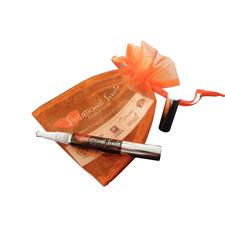Why have my teeth changed their shade?
This is a question we are often asked and there are many different reasons. In a nutshell, the three types of stain are extrinsic, intrinsic and age-related. Almost everyone enjoys a good cup of coffee or tea. Many adults also enjoy a glass of red wine or two. Extrinsic stains are caused by these and other dietary/habitual factors such as tobacco products and affect the outer surfaces of teeth. The most interesting example of extrinsic staining I have seen was from a patient who ate a diet heavy in blueberries and blackberries. The alarmed patient was quickly relieved once his teeth were polished and his home care techniques reviewed. While excellent home care and over-the-counter whitening products will help with extrinsic stains, they also respond well to professional whitening systems.
Intrinsic stains are deeper discolorations of the enamel and dentin layers. They can either be developmental or acquired in nature. Common forms of acquired intrinsic staining are darkening of teeth from large silver amalgam fillings and previous root canal treatments. Developmental stains are most commonly related to fluoride ingestion and tetracycline staining. Tetracycline stains are caused by the antibiotic’s interactions with calcium hydroxyapatite crystals during tooth formation, which results in different coloration.
Age related staining is a little more obvious and incorporates some properties of both intrinsic and extrinsic staining. The simple way to describe it is that as the tooth “wears” with age, its discolorations from larger fillings, coffee, tea, soda, red wine, and other factors become more apparent.
Options for teeth whitening
When it comes to whitening, there are many ways to brighten a smile, starting with whitening toothpastes and home care techniques. Popular over-the-counter products such as Crest White Strips are generally effective at brightening teeth by a shade or so, however the strips can be uncomfortable to wear, leave the gums sore, and may result in sensitivity. Many dentists, me included, will fabricate custom trays for patients to wear at home with a solution in place. This option provides the flexibility of a wider range of solution strengths for different patient needs, can be used for long periods of time, and is easy to use months or even years after the initial treatment. Drawbacks are somewhat higher cost, greater sensitivity with increased concentration of bleaching agent, and the dreaded impressions of teeth. Over the years, in office whitening systems have become increasingly popular. Major advantages are reduced number of visits, faster results, and brighter whitening. Disadvantages are the typically higher cost of treatment, increased short term discomfort, and inability to easily maintain the shade from home. 
Teeth Whitening offered at White Dental Studio Ashland OR
Sinsational Smile offers a unique hybrid approach to in-office and at-home whitening. The prefabricated tray holds the initial whitening solution which is activated and accelerated by the light system. Initial treatment takes 20-35 minutes (additional to exams, hygiene, or any other treatment). The home-use pen (pictured right) can be used for another 10-14 days using the tray to help isolate the teeth. Sinsational Smile has vastly reduced sensitivity by incorporating organic menthol in the solution. Patients can order re-fills of the pen which should last for approximately 50-60 applications. By combining the benefits of in-office and at-home treatments, Sinsational Smile achieves favorable results in a comfortable, environmentally friendly manner. Not all staining is remedied in the same way. It is very important that to discuss what options are available with your dentist or hygienist. We offer several options in the office and enjoy discussing each patient’s case. Please contact us at 541.708.6288 to set up an appointment or to ask any questions. Or, feel free to email us. ~Dr. White

You can definitely see your skills within the work you
write. The sector hopes for more passionate writers such
as you who aren’t afraid to say how they believe. All the
time follow your heart.